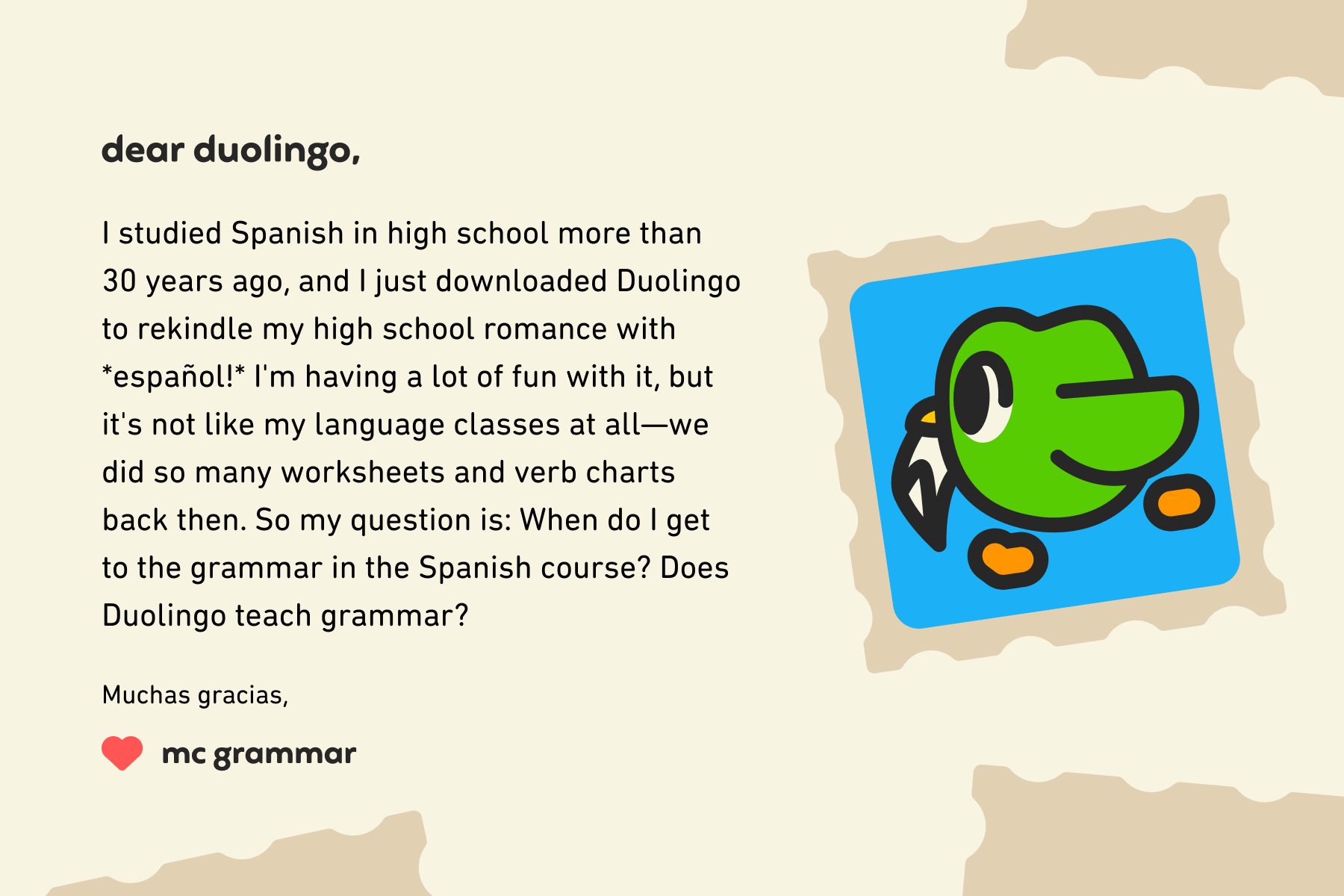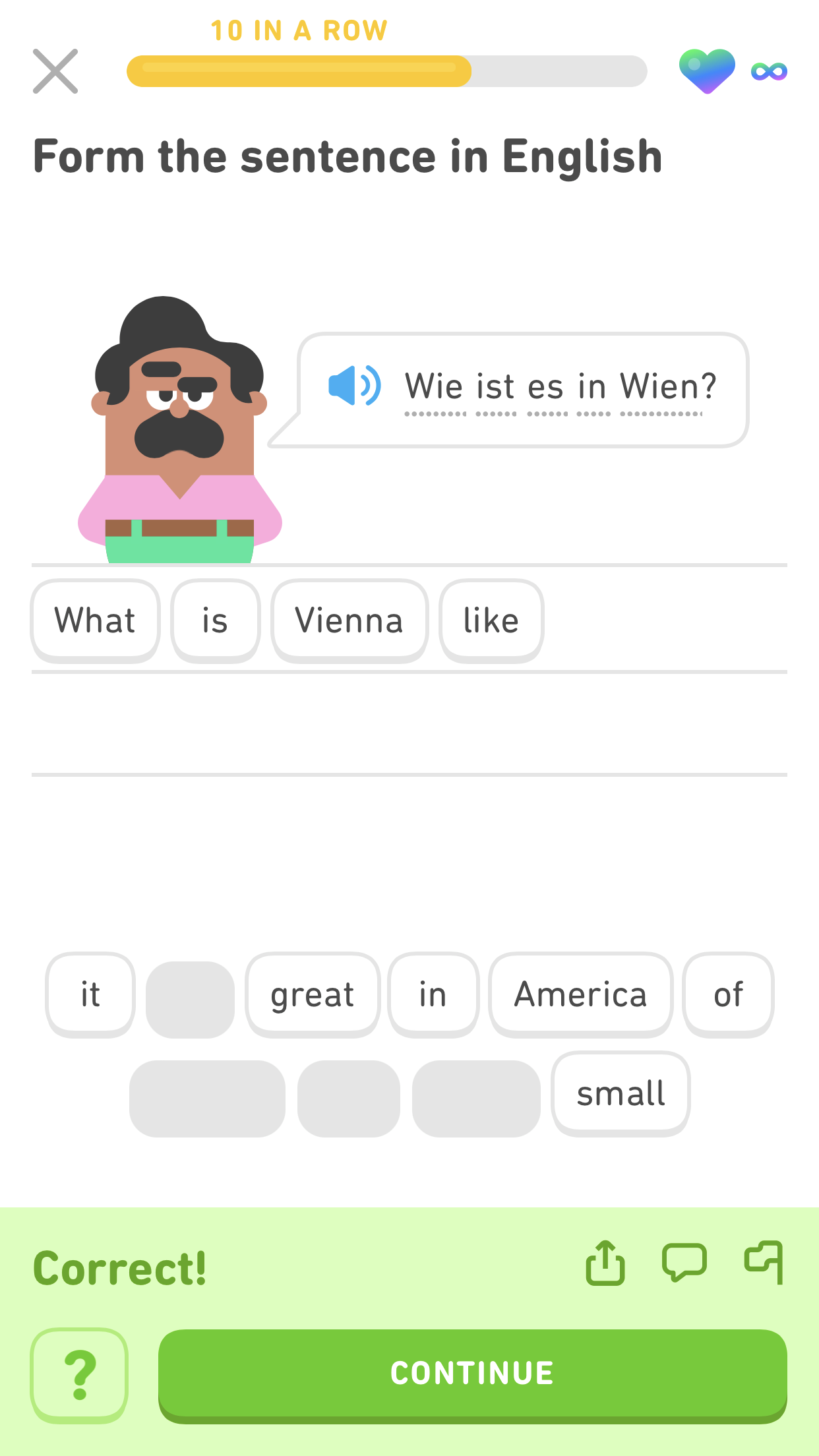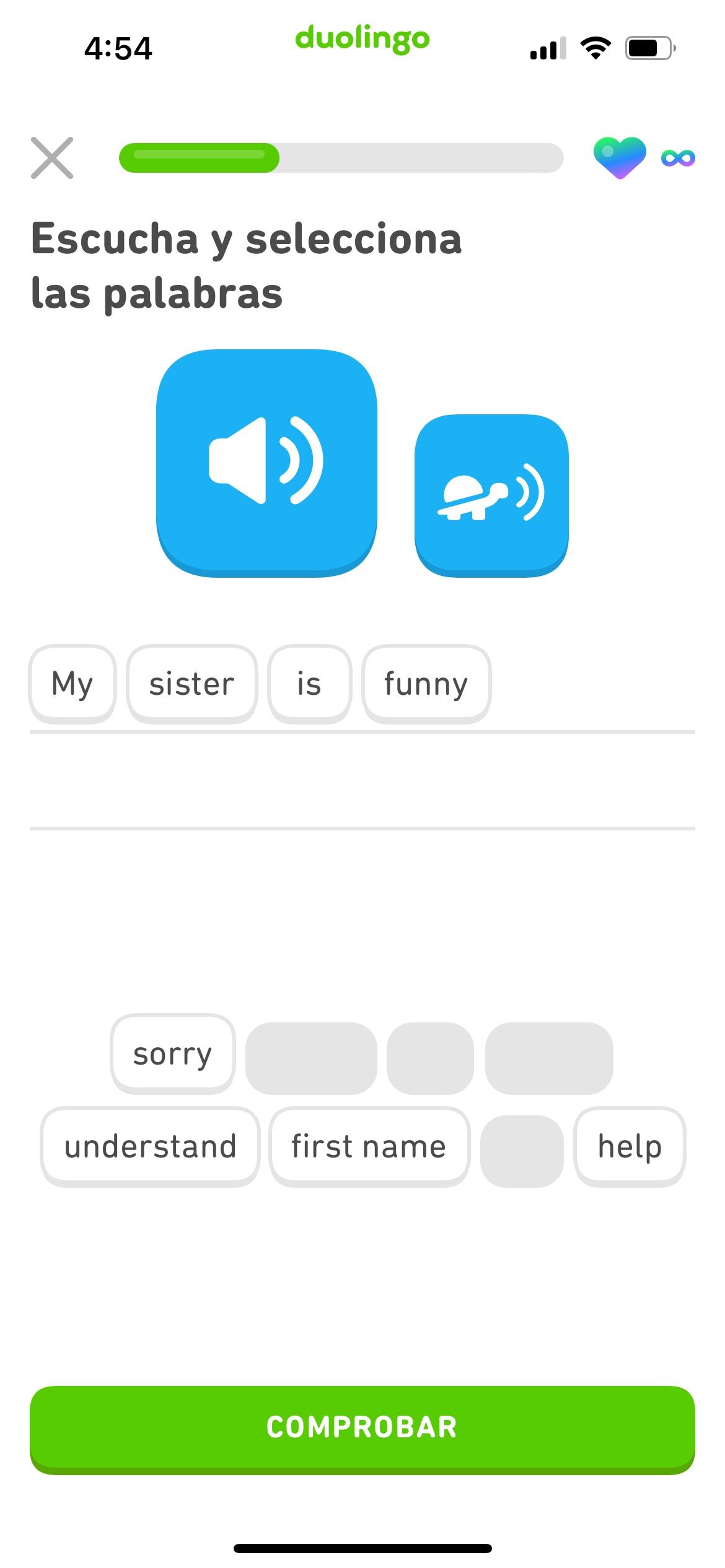Welcome to another week of Dear Duolingo, an advice column just for language learners. Catch up on past installments here.
Hi everyone! I'm Dr. James Leow, back with another installment of Dear Duolingo. And you know what that means: This week we have a question all about grammar! 🎉 🎉 In some of my previous posts, we've gotten into the details of Spanish grammar, like the different past tenses and direct and indirect objects, but this week we're starting with a more fundamental question that covers all of grammar. 👀
This week's question:

Ah, that's two of us who think of Spanish as our first love 💘 This is a fantastic question: It might seem simple on the surface, but it is actually a really complex issue about what we mean when we say "grammar." And I certainly have a lot of thoughts about that!
What is grammar?
Basically, grammar refers to the patterns we find in language—like the rules for combining words into longer phrases. And actually, I don't even mean only words—I also mean parts of words, like word endings, verb conjugations, prefixes, particles, etc. Any time you are combining things or adding endings in your language, you are using grammar!
Grammar shows up for big ideas and for small ones, too. You need grammar to form sentences and paragraphs, but swapping the -ar ending on a Spanish verb for an ending like -o is grammar too—even if we're talking about just one word, like hablo (I speak). Even naming a picture requires grammar: If you see 👟and say "a gray shoe" (or un zapato gris, if you're studying Spanish) you're using grammar!
- You needed to know whether to use "a" or "an" before a word like "shoe"
- You needed to know whether to put "a" before, after, or in the middle of the word "shoe" (not all languages do this the same way!)
- You needed to know where to put the adjective (in English it goes before the noun, and in Spanish it goes after)
- To say "a gray shoe" out loud, you needed to know where to put emphasis or stress
I like to think of grammar as the rules (or really, patterns) for getting your point across. Grammar is here to help! Many people think of grammar as strict, established rules about what is allowed… and that what isn't allowed is bad. English speakers and English learners might learn a "rule" that you're not allowed to end an English sentence with a preposition, but we English speakers do it all the time! And if you're studying a language, knowing how people really use it is what matters.
It's easy to feel overwhelmed by all the finicky little rules, so my advice is to not overthink them and focus on how to get your meaning across. If you're a working on possessive pronouns in German or the difference between por and para in Spanish, you have definitely asked yourself why grammar is necessary at all. 😬
The reason is mostly “just because.” Grammar often helps us say complicated things really fast, by packing in lots of information into little bits of language, but some patterns stick around even when they are no longer meaningful, like little grammatical relics.
Does Duolingo teach grammar?
The short answer is an enthusiastic YES!! 😍
Since grammar happens any time you combine words or parts of words, and even when you have to choose between words (like ser and estar in Spanish), you're learning grammar in every single exercise:
- Organizing word tiles to form a sentence? Grammar.
- Figuring out which word goes in a blank? Grammar.
- Deciding which grammatical gender a word has and choosing el or la? Grammar.
- Reading sentence after sentence in Stories? Grammar.
- Repeating a sentence filled with words and endings and conjugations? Grammar, grammar, grammar!
Here are a few examples of the grammar we sneak into every lesson:
| Exercise | Grammar concepts |
|---|---|
 |
|
 |
|
 |
|
All of those grammatical rules could be different in the language you're learning! Spanish, English, and German are all pretty closely related, so some of those rules might look familiar to you—but if you were studying an unrelated language, like Korean, all those small grammar details really matter!
Can’t I just get a list of grammar rules?
What learners sometimes mean by "grammar" is explicit grammar teaching: being told in a lesson, worksheet, or verb chart exactly what the rule is. Adult learners especially like to get explicit information about the grammar they're learning, but it's (mostly) not necessary for successful learning.
In some cases, like reciting verb endings to yourself ("Ok, in Spanish it's -o, -as, -a, -amos, -an for -ar verbs") explicit rules can actually get in the way of quickly saying or understanding the language. What you really want to do is get enough exposure to the language—and its grammatical patterns—so that you start developing instincts for what sounds right and what goes together. Seeing the rules spelled out can help you notice some patterns better, so you can find those in your Duolingo course, too, but we use them to support your learning (not to replace your lessons). Knowing how to express the rules might be helpful, clarifying, or even fun (!!)—but grammar is there any time the language is there.
That's why Duolingo includes a combination of implicit and explicit tools to teach grammar in our courses:
- Implicit (sneaky): In every lesson and exercise, you are seeing grammar in action. The more examples you see, the more opportunities you have to notice and practice patterns, which is the best way to learn. You also get implicit grammar lessons when you listen to Duolingo podcasts, tune into a favorite playlist, or binge watch a series in the language.
- Explicit (out loud): You'll find explicit grammar information in our Guidebooks, at the beginning of super-focused grammar lessons in our larger courses, and—of course!—right here on the Duolingo Blog.
It might surprise you but adults really CAN learn these patterns without being taught them directly. Think about all the other patterns you learn without trying: Have you ever started humming the next song in a playlist before it even started because you've listened to that playlist so many times? Your brain is built for learning like this!
It's always grammar time!
So, MC Grammar, the next time you do a lesson—or call your mom or write a comment on TikTok—think about all the patterns you've subconsciously absorbed into your language knowledge! All that know-how is grammar, and whether you learn it implicitly or from explicit explanations and charts, it's what you're using every time you communicate.
For more answers to your language and learning questions, get in touch with us by emailing dearduolingo@duolingo.com.



